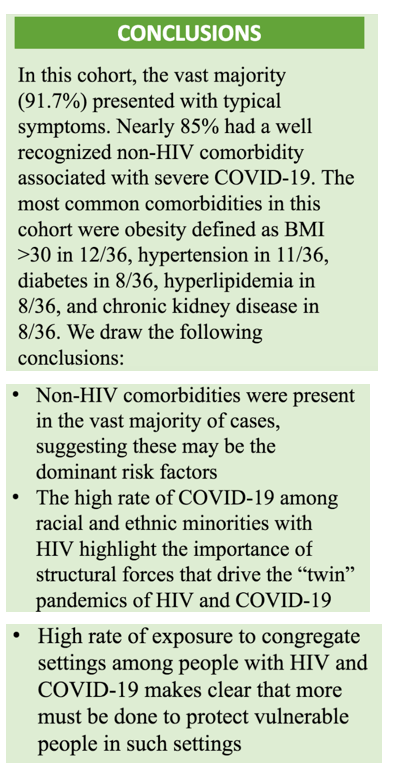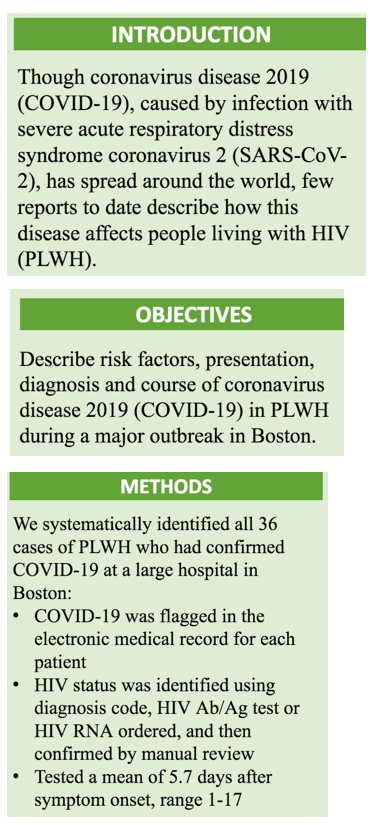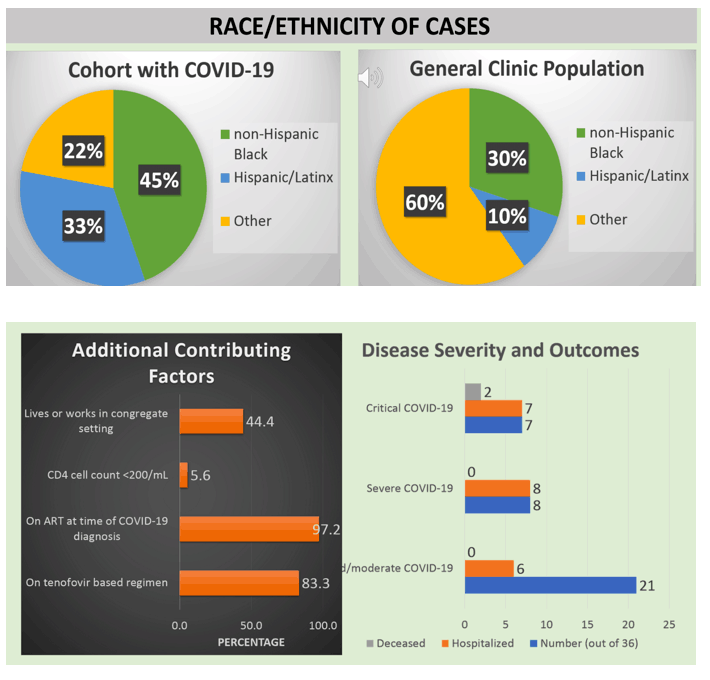 |
 |
 |
| |
Faster virological suppression with dolutegravir versus efavirenz in pregnancy does not lower the risk of HIV mother-to-child-transmission: A meta-analysis of 5 clinical trials in 1074 pregnant women
|
| |
| |
Seemingly Contradictory Findings on DTG vs EFV in Pregnancy: Meta-analysis
AIDS 2020: 23rd International AIDS Conference Virtual, July 6-10, 2020
Pdf of slide talk attached
Download the PDF here
Mark Mascolini
Meta-analysis of 5 studies found greater virologic suppression with dolutegravir (DTG) regimens than efavirenz (EFV) regimens during pregnancy [1]. Yet the comparison disclosed 5 mother-to-child transmissions of HIV with DTG and none with EFV. Safety findings differed marginally with DTG versus EFV combinations.
Current World Health Organization advice favors the integrase inhibitor DTG in first-line regimens for pregnant women because it is well tolerated and suppresses viral load quickly. Researchers from Imperial College London, the University of Liverpool, and other centers who conducted this study note that concerning rates of resistance to nonnucleosides in Africa also favor DTG in pregnancy because of its high barrier to resistance.
These investigators compared results of recent trials in pregnant women using DTG or EFV with tenofovir disoproxil fumarate (TDF) or tenofovir alafenamide (TAF) plus lamivudine (3TC) or emtricitabine (FTC). (The abbreviation XTC means a regimen contains either 3TC or FTC.) The five trials, their sites, regimens, and numbers of participants follow:
DolPHIN-1: Africa, TDF/XTC+DTG vs TDF/XTC/EFV, n = 60
DolPHIN-2: Africa, TDF/XTC+DTG vs TDF/XTC/EFV, n = 268
NAMSAL: Africa, TDF/3TC+DTG vs TDF/3TC/EFV, n = 25
ADVANCE: Africa, TAF/FTC+DTG vs TDF/FTC+DTG vs TDF/FTC/EFV, n = 81
IMPAACT 2010: Africa, Asia, North and South American:
TAF/FTC+DTG vs TDF/FTC+DTG vs TDF/FTC/EFV, n = 640
Together the trials included 1074 pregnant women. Pooling results of the five trials, the researchers found 90% in DTG arms versus 72% in EFV arms had viral suppression at delivery, a highly significant difference (P = 0.001). Odds of viral suppression were almost 3-fold higher with DTG than EFV (odds ratio 2.90, 95% confidence interval 1.54 to 5.46, P = 0.001).
Despite better viral suppression with DTG regimens, 5 of 659 women in DTG arms versus none of 415 in EFV arms transmitted HIV to their infants, though that difference did not reach statistical significance (1% versus 0%, P = 0.18).
The stillbirth rate was 4% with DTG versus 2% with EFV, a difference that also stopped short of statistical significance (P = 0.06). Neonatal death rates were similar with DTG and EFV (2% and 3%, P = 0.68). When the investigators combined rates of stillbirth, neonatal death, and mother-to-child transmission, the between-arm difference was negligible (6% with DTG and 5% with EFV, P = 0.34).
Total adverse events were nonsignificantly more frequent with EFV than with DTG (28% versus 22%, P = 0.06). Preterm births proved significantly more frequent with EFV than DTG (12% versus 8%, P = 0.04). Combined frequency of infants small for gestational age differed little between treatment groups (17% with DTG and 18% with EFV, P = 0.38). Among women taking DTG, adverse event rates for mothers or infants did not differ much when mothers took TAF/FTC versus TDF/FTC.
In the ADVANCE trial women taking TAF/FTC+DTG gained more weight through 144 weeks than those taking TDF/FTC+DTG or TDF/FTC/EFV (12.3 vs 7.4 vs 5.5 kg).
The researchers concluded that because DTG had superior viral efficacy in this meta-analysis, "it was unexpected to find five mother-to-child transmission cases with dolutegravir and none with efavirenz.
"
They caution that pregnant women in these trials took antiretrovirals for relatively short periods, whereas many women outside of trials will take a regimen for years before becoming pregnant. The researchers underline the need for longer-term safety analysis of DTG because of its association with weight gain, especially in black women. An ADVANCE trial analysis by some of these same investigators projected that long-term use of DTG plus TAF or TDF could heighten the risk of adverse pregnancy outcomes for mothers and infants because of DTG- and TAF-related weight gain [2].
References
1. Asif S, Baxevanidi E, Hill A, et al. Faster virological suppression with dolutegravir versus efavirenz in pregnancy does not lower the risk of HIV mother-to-child-transmission: A meta-analysis of 5 clinical trials in 1074 pregnant women. AIDS 2020: 23rd International AIDS Conference Virtual. July 6-10, 2020. Abstract OABLB0105.
2. Asif S, Baxevanidi E, Hill A, et al. The predicted risk of adverse pregnancy outcomes from treatment-induced obesity in the ADVANCE trial. AIDS 2020: 23rd International AIDS Conference Virtual. July 6-10, 2020. Abstract OABLB0103.




|
| |
|
 |
 |
|
|